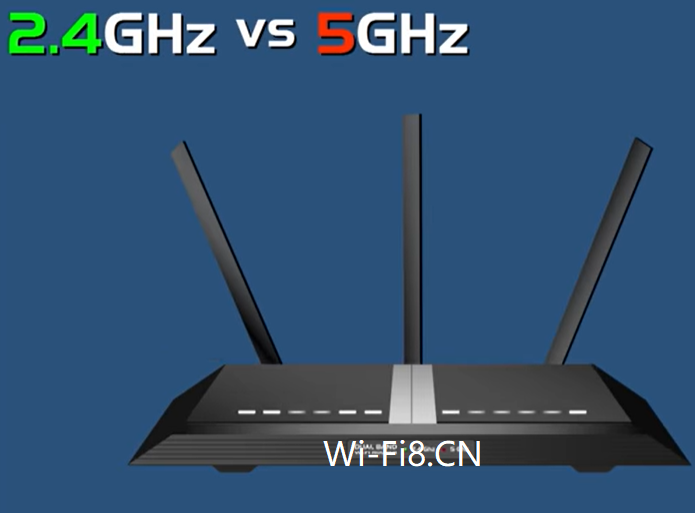802.11n vs 802.11ac vs 802.11ax adapter. What does 802.11n/ac/ax mean? Comparison of 802.11n (WiFi 4), 802.11ac (Wi-Fi 5), 802.11ax (WiFi 6).
What does Wi-Fi 6 offer?
A detailed description of all Wi-Fi 6 features and specifications can be found in the Wi-Fi Alliance white paper (form required) or documentation prepared by Cisco. Next, we’ll talk about major innovations.
802.11n vs 802.11ac vs 802.11ax Adapter
Supports the 2.4 and 5 GHz bands. Ideally, supporting both 2.4 and 5 GHz will help increase the number of multi-device scenarios. In practice, however, this advantage may not be of any use. There are too many older devices on the market (supporting 2.4 GHz), so new devices will operate in compatibility mode on a regular basis.
OFDMA support. This is known as orthogonal frequency-division multiple access (OFDMA). Essentially, the technology is a “multi-user” version of OFDM.
It allows you to divide signals into subcarriers and select their groups to handle a single data stream.
This will allow you to broadcast data simultaneously to multiple Wi-Fi 6 clients at average speed. But there is a caveat: all of these clients must support Wi-Fi 6. Therefore, the “old” gadget is again “outdated”. MU-MIMO and OFDMA
Joint work. In Wi-Fi 5 (i.e. 802.11ac in the old name, approved in 2014), MIMO technology (multiple-input multiple-output) allows data to be broadcast to four clients using different subcarriers. Wi-Fi 6 doubles the number of possible device connections to eight.
The Wi-Fi Alliance says that MU-MIMO systems, along with OFDMA, will help organize multi-user data transfer at speeds of up to 11 Gb/s on the downlink. This result was demonstrated at CES 2018 with test equipment. However, some WiFi6 users point out that ordinary gadgets (laptops, smartphones) will not see such speeds.
WHAT WILL THE WI-FI 6 (802.11ax) STANDARD BRING US?
Future major updates to the standard promise to make Wi-Fi faster and better.
The 802.11ax standard is billed as “high performance” and is often labeled Wi-Fi 6 – consistent with the new nomenclature introduced by the Wi-Fi Alliance, which has been labeled Wi-Fi 5 (802.11ac) and Wi-Fi Network Connection 4 (802.11n) in past generations. As expected, this tag will be reflected in the name of the new device.
Technically, Wi-Fi 6 offers 37% data transfer rates for individual users compared to 802.11ac, but more importantly, the updated specification promises a 4x increase in bandwidth per user in densely populated circles (in the case of high density of user devices), as well as improved energy efficiency, which should ultimately lead to increased autonomy for gadgets.
802.11n vs 802.11ac vs 802.11ax adapter
| WiFi standards | 802.11n(WiFi 4) | 802.11ac (Wi-Fi 5) | 802.11ax(WiFi 6) |
| Year of approval | 2009 | 2013 | 2019(2020/Wi-Fi 6E) |
| range | 2.4GHz, 5GHz | 5GHz | 2.4 GHz、5 GHz
Wi-Fi 6E为6GHz |
| Channel width | 20MHz、40MHz | 20MHz、40MHz、80MHz、80+80MHz、160MHz | 2.4GHz:20MHz、40MHz; 5GHz:80MHz、80+80MHz、160MHz |
| FFT size | 64, 128 | 64, 128, 256, 512 | 64, 128, 256, 512, 1024, 2048 |
| The interval between subcarriers | 312.5MHz | 312.5MHz | 78.125MHz |
| OFDM symbol transmission duration | 3.6ms (Short interval);4ms(Long interval) | 3.2 millisecond | 12.8 millisecond |
| Maximum modulation level | 64-QAM | 256-QAM | 1024-QAM |
| Transfer rate | 54 to 600 Mbps (up to 4 spatial streams) | 433 Mbps (80 MHz, 1 spatial stream); 6933 Mbps (160 MHz, 8 spatial streams) |
600 Mbps (80 MHz, 1 spatial stream); 9607.8 Mbps (160 MHz, 8 spatial streams) |
| Support Su / Mu – Mimo – Ofdem / A | SU-MIMO-OFDM | SU-MIMO-OFDM (WAVE 1), MU-MIMO-OFDM (Wave 2) | MU-MIMO-OFDMA |
This is all achieved by using several modern technology solutions in 802.11ax, including several for parallel connections of multiple users, namely MU-MIMO and OFDMA; These mechanisms, taken from the cellular industry, greatly increase the load capacity and efficiency of the network, serve more parallel connections and make better use of dedicated frequency bands.
Owners and users of home networks that decide to update their hardware in the future will be able to count on many of the positive nuances that come with these technologies, mainly when the number of devices per home network increases: according to some experts, by 2022, there will be about 50 node devices per home on average.
However, as already mentioned, Wi-Fi 6 will play an important role in areas with heavy network loads, and as such, it will play an important role in laying the foundations for new “smart” infrastructure, in particular, devices that interact in the concept of the Internet of Things (IoT).
In addition to supporting parallel addressing across many different devices and networks, which is the essence of the IoT concept, the Wi-Fi 6 specification is designed to meet the ever-increasing data rate requirements when different users connect in parallel.
Overall, Wi-Fi 6 is based on the 802.11ac standard, which has been updated with more than 50 specialized technical solutions, although the final version of the new standard may not include all the innovations.
A WiFi adapter for computers is Wi-Fi8.CN provided. What are the brands of WiFi adapters?
Best WiFi adapter brand recommendation, best WiFi adapter brand in 2023:
TP-Link WiFi Adapter, Wi-Fi8 Adapter, 1200Mbps Wireless USB WiFi Adapter…













Interpret 802.11ad and 11ax
An international chip giant has announced the upcoming tri-band 802.11ad chipset, which may be shown at CES. It is understood that the chipset will be the core component of the home wireless router, which will integrate 60GHz 802.11ad technology with 5GHz and 2.4GHz 802.11ac, which is a tri-band access point chipset.
Familiar with 802.11ac labeling Your friends know that through 8×8 MIMO, 256 QAM modulation and channel binding of four 40 MHz channels, the theoretical wireless transmission rate of the 11ac standard can also reach 7Gbps; But know that 11ad to reach 7Gbps speed only needs to pass through a spatial stream, 64QAM modulation, and a single channel.